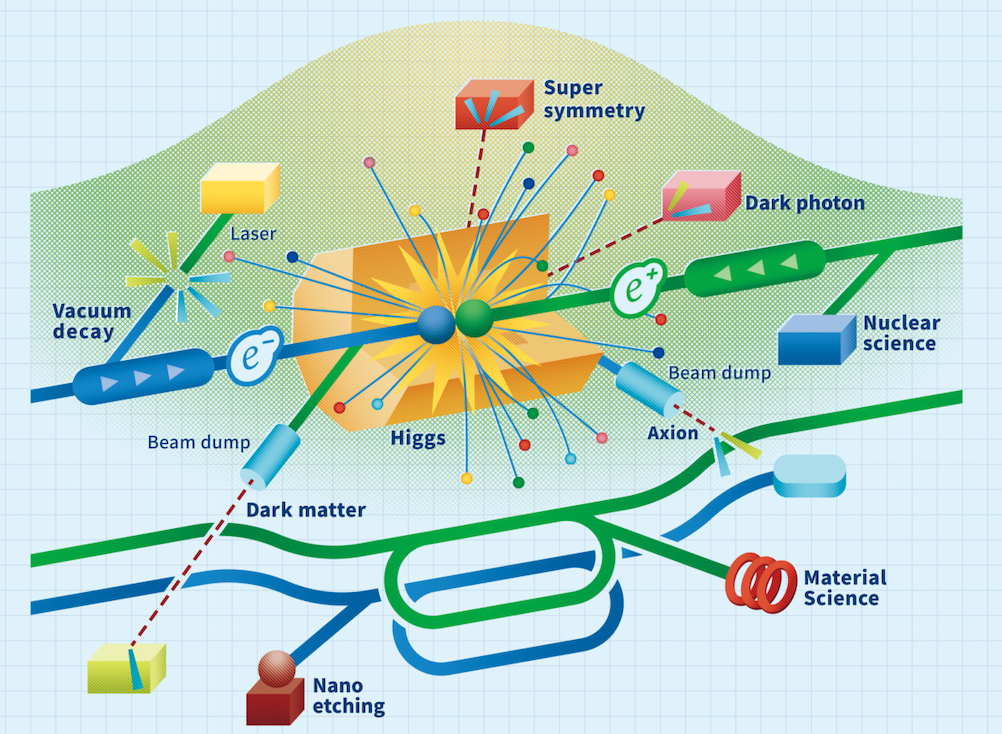
The Early Career Researchers (ECRs) community has been very active since the last 2020 Update of the European Strategy for Particle Physics (ESPPU), e.g. by conducting an extensive survey on career prospects and diversity. In September 2024 the ECFA ECR panel initiated a process to prepare a dedicated input from ECRs to the 2026 ESPPU, inviting all European ECRs to contribute. Following the workshop organised at CERN on 14 November 2024, the preparation of the ECR White Paper is ongoing. The report will be largely based on a topical survey distributed within the community. In parallel, an ECR session was organised within the linear collider (LC) community during the LCWS24 in Tokyo, providing a platform for ECRs to share their perspectives on the future of linear colliders.
Following this trend, the LC Vision Community Event, held on 8-10 January 2025 at CERN, began with an ECR session. Its purpose was to give younger representatives of the community an opportunity to discuss their perspectives on different aspects of a future LC. The session started with a live survey among the ECR participants followed by a discussion; in the second part, senior scientists joined the ECRs to discuss the main points raised.
The live survey shed light on the ECR community’s perspective on the assets of the LC Vision project. There is strong support for the physics programme, which is seen as broad and attractive. Additionally, due to the advanced technical design of the linear colliders, they appear as a more timely option compared to other proposals. The project timeline and its technical feasibility have been highlighted as primary strengths, reflecting the essential needs of ECRs, along with the flexibility to future challenges and evolving priorities.
At the same time, participants identified points where additional focus is needed. One of the key issues brought up during the session was the conservative character of the LC proposals. Some participants pointed out that the projects should aim higher, and highlight also a long-term vision and perspective, not only a guaranteed low-budget option. In order to be competitive, the future collider proposals should bring enthusiasm to the whole community, the ECRs in particular. The linear machines, with a possibility of future upgrades based on new technologies (such as cool copper, beam energy recovery, or plasma wakefield), have both the potential to pose an exciting option for the (far) future, and the flexibility to remain competitive even if the necessary funding is not available right away. The former of these strengths needs to be further underlined and promoted.
There was a call for increased efforts to engage more ECRs in LC studies, promoting broader involvement and collaboration within the community. Participants also suggested that CERN would profit from diversifying its funding policy for future collider studies by providing more resources to explore the LC options. Moreover, establishing a clear and well-defined strategy for the LC’s position in the global landscape is seen as crucial and should be further developed. The community needs a clear strategy to move forward for the case that another major Higgs factory project is pursued.
Another aspect emphasised during the session was the need for unity within the LC Vision community itself. Given the existence of several linear collider proposals, participants stressed the importance of consolidating efforts and presenting a cohesive strategy. Aligning on common goals and priorities will not only strengthen advocacy for an LC but also provide a clear and unified message to decision-makers and the whole particle physics community, increasing the chances of success. These reflections underline the young researchers’ dedication to further enhancing the LC Vision project while recognising the exciting features already in place. The choices made for the ESPPU will significantly shape the opportunities and direction available to the next generation of scientists.





Recent Comments